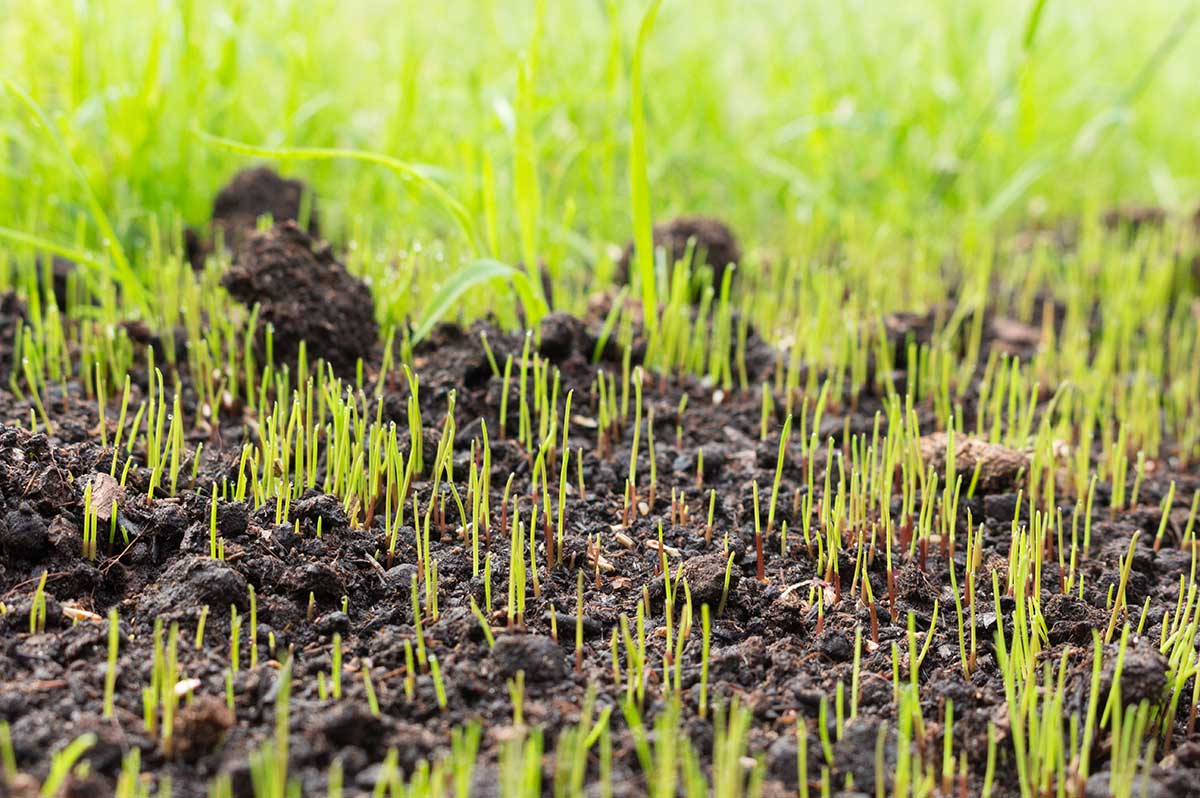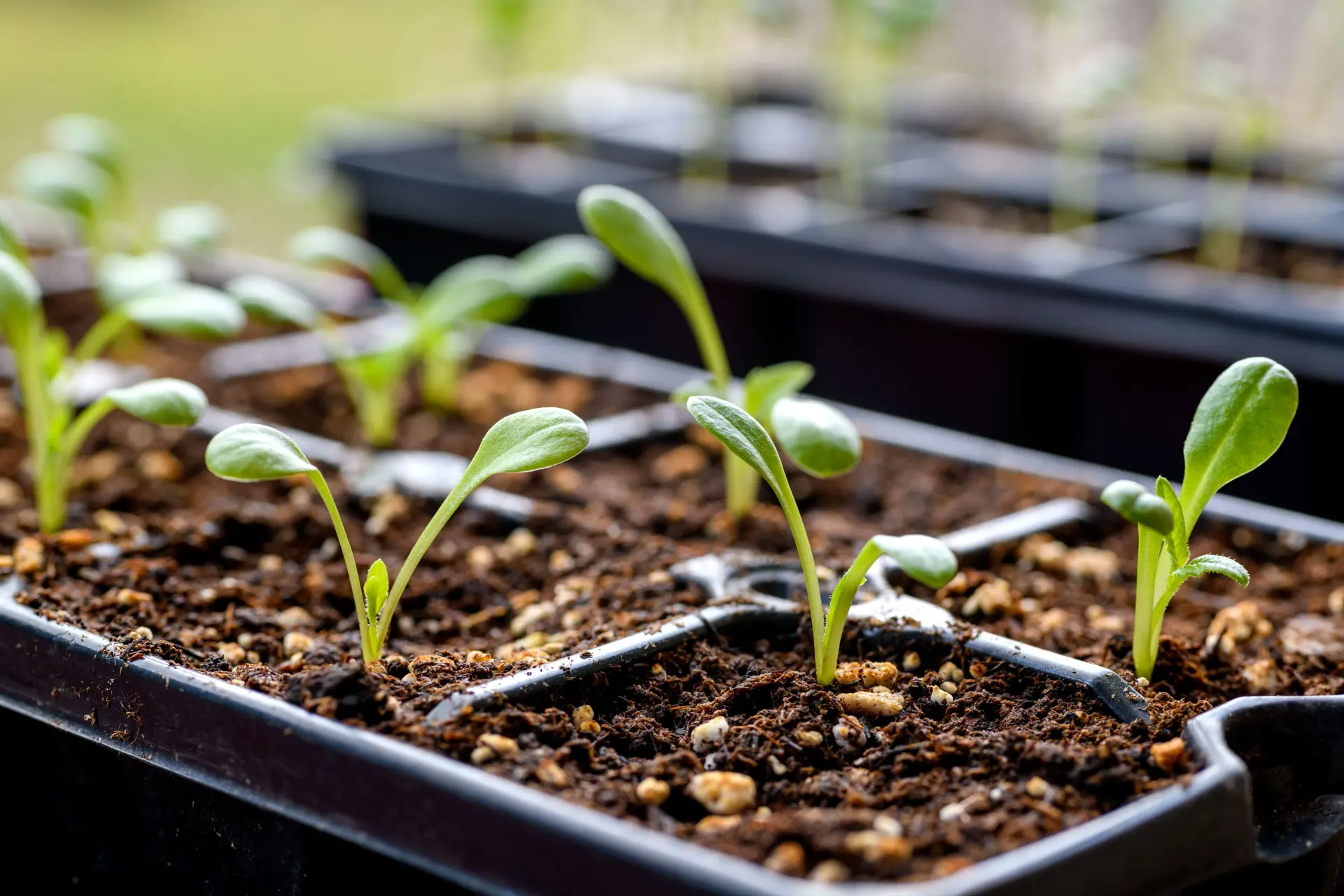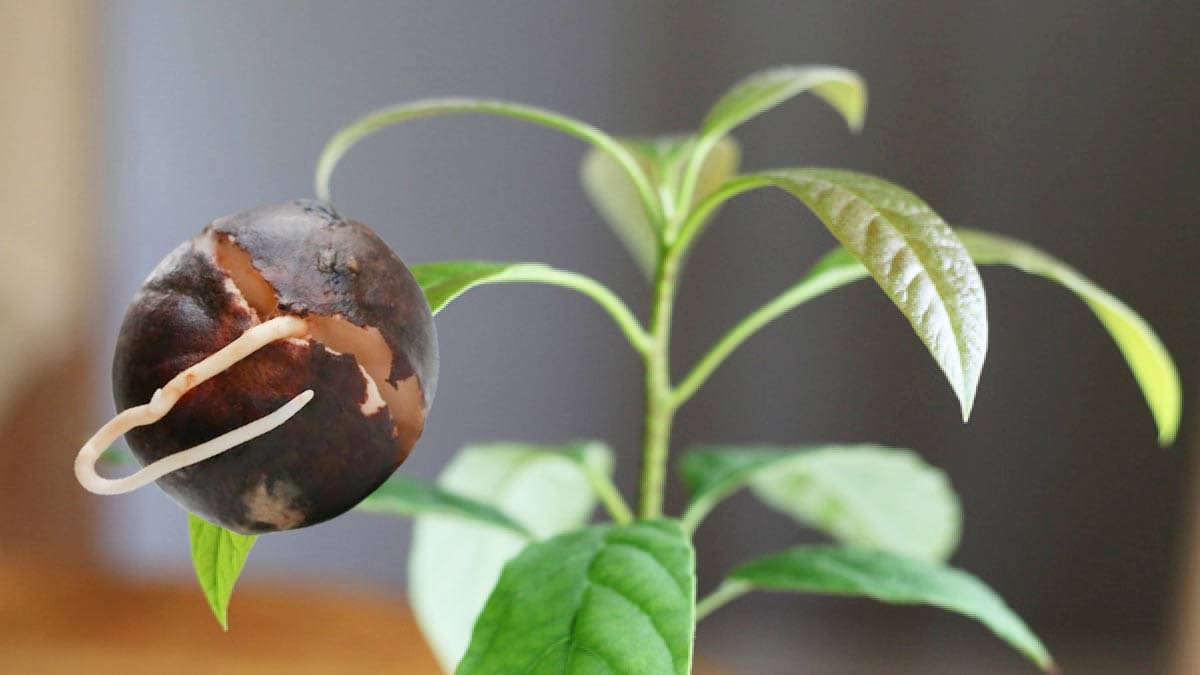Home>Garden Essentials>How Long Does It Take Pumpkin Seeds To Sprout


Garden Essentials
How Long Does It Take Pumpkin Seeds To Sprout
Modified: May 6, 2024
Discover how long it takes for garden pumpkin seeds to sprout and explore the process of nurturing and growing healthy plants in your garden.
(Many of the links in this article redirect to a specific reviewed product. Your purchase of these products through affiliate links helps to generate commission for Storables.com, at no extra cost. Learn more)
Introduction
Welcome to the wonderful world of gardening, where the beauty of nature flourishes in our very own backyard. There’s something truly magical about cultivating plants, witnessing their growth, and reaping the rewards of our labor. And what better way to start your gardening journey than by growing your own vegetables, like pumpkins?
Pumpkins are not only delicious and versatile in the kitchen, but they also make a charming addition to any garden landscape. From their vibrant orange color to their iconic shape, pumpkins are a true symbol of the fall season. And if you’re eager to embark on this pumpkin-growing adventure, one question that might cross your mind is: How long does it take pumpkin seeds to sprout?
The sprouting time of pumpkin seeds can vary depending on multiple factors. In this article, we will explore those factors, discuss the average sprouting time, delve into the germination process of pumpkin seeds, and provide some useful tips to speed up the sprouting process. So, let’s dig in!
Key Takeaways:
- Pumpkin seeds typically take 4 to 10 days to sprout, but factors like soil temperature and seed quality can affect the timing. Patience and proper care are key to successful germination.
- To speed up pumpkin seed sprouting, consider pre-soaking the seeds, maintaining warm soil, controlling moisture, and providing adequate light. Thin out seedlings and protect them from cold temperatures for optimal growth.
Read more: How Long Does A Seed Take To Sprout
Factors Affecting Pumpkin Seed Sprouting Time
When it comes to the sprouting time of pumpkin seeds, several factors can influence the process. Let’s take a closer look at some of these factors:
- Soil Temperature: The temperature of the soil plays a crucial role in the sprouting of pumpkin seeds. Pumpkin seeds prefer warm soil, typically between 70°F and 95°F (21°C and 35°C). Cooler temperatures can slow down germination, while excessively high temperatures can be detrimental to seed viability. Therefore, it’s important to ensure that the soil is at an optimal temperature for successful sprouting.
- Moisture Levels: Adequate moisture is essential for pumpkin seed germination. Dry soil can prevent seeds from absorbing water and sprouting, while overly wet soil can lead to rot and seedling damping-off. It’s important to maintain a consistent level of moisture in the soil during the germination period. Regularly check the soil’s moisture content and adjust watering accordingly.
- Seed Quality: The quality of the pumpkin seeds you use can greatly impact the sprouting time. It’s recommended to choose high-quality seeds from reputable suppliers. Look for seeds that are plump, firm, and without any signs of damage or mold. High-quality seeds have a higher chance of sprouting quickly and producing healthy seedlings.
- Seed Viability: The viability of the pumpkin seeds refers to their ability to sprout and grow into healthy plants. The fresher the seeds, the higher the viability. As time passes, seed viability decreases, and the sprouting time may be prolonged. It’s advisable to use seeds that are within their recommended storage period to ensure optimal viability.
Understanding these factors and their impact on pumpkin seed sprouting time can help you create the ideal conditions for successful germination. However, it’s important to note that while these factors influence sprouting time, some variation is normal, and exact sprouting times can vary from seed to seed.
Average Sprouting Time for Pumpkin Seeds
The sprouting time for pumpkin seeds can vary depending on various factors, as discussed earlier. On average, pumpkin seeds take anywhere from 4 to 10 days to sprout. However, it’s essential to keep in mind that this is just an estimate, and the actual sprouting time may vary.
The temperature and moisture levels in the soil play a significant role in determining how quickly the seeds sprout. If the soil temperature is at the optimal range of 70°F to 95°F (21°C to 35°C) and the moisture levels are consistently maintained, you can expect the seeds to sprout within the average time frame.
It’s important to note that different varieties of pumpkins may have slightly different sprouting times as well. Some varieties may sprout earlier, while others may require a little more time. The growing conditions and seed quality also play a role in the sprouting time.
Patience is key when waiting for pumpkin seeds to sprout. It’s crucial to provide the seeds with the optimal conditions, including the right temperature, moisture, and sunlight, to allow for successful germination. Once the seeds have sprouted and the seedlings have emerged, it’s important to continue providing them with the proper care to ensure healthy growth.
Remember, gardening is a wonderful journey that requires patience, observation, and nurturing. Enjoy the process, and before you know it, your pumpkin seeds will sprout, signaling the start of a beautiful pumpkin plant.
Pumpkin seeds typically take 5-10 days to sprout when planted in moist soil at a depth of 1-2 inches. Keep the soil consistently moist and provide plenty of sunlight for best results.
Germination Process of Pumpkin Seeds
The germination process is an exciting and crucial stage in the life of pumpkin seeds. Understanding this process can help you create the right conditions for successful sprouting and ensure the healthy growth of your pumpkin plants. Here’s a breakdown of the germination process of pumpkin seeds:
- Water Absorption: The germination process begins when the pumpkin seeds come into contact with moisture. The outer shell of the seed absorbs water, causing it to swell and soften. This absorption triggers various biochemical processes within the seed.
- Enzyme Activation: As the seed absorbs water, enzymes within it become activated. These enzymes break down stored nutrients, such as starches and proteins, into simpler forms that the emerging seedling can utilize for growth.
- Root Development: With energy from the stored nutrients, the first root (radicle) emerges from the seed. The radicle grows downward into the soil, anchoring the seedling and absorbing water and nutrients from the soil.
- Leaf Emergence: Once the roots are established, the seedling focuses on growing its first set of leaves. These cotyledons, also known as seed leaves, emerge from the soil and provide the initial food supply for the growing seedling.
- Growth and Development: With roots for absorption and leaves for photosynthesis, the seedling continues to grow and develop. It starts producing true leaves and begins its journey towards becoming a mature pumpkin plant.
Throughout the germination process, it’s crucial to provide the optimal growing conditions for the pumpkin seeds. This includes maintaining the proper temperature, moisture levels, and sunlight exposure. By creating an environment that mimics the seed’s natural habitat, you can significantly increase the chances of successful germination.
Remember to monitor the moisture levels in the soil and adjust watering accordingly. Overwatering can lead to rot and damping-off, while underwatering can hinder germination. Maintaining a consistent level of moisture is key to ensuring healthy seedling development.
With proper care and attention, you’ll witness the remarkable transformation of a tiny pumpkin seed into a flourishing plant, ready to bear fruit and bring joy to your garden.
Tips for Speeding up Pumpkin Seed Sprouting
If you’re eager to see your pumpkin seeds sprout and start their journey towards becoming thriving plants, here are some tips to help expedite the sprouting process:
- Pre-Soaking: Soaking pumpkin seeds in water overnight before planting can help soften their outer shell and encourage faster germination. Fill a container with water and allow the seeds to soak for 8-12 hours. Remember to discard any seeds that float to the top, as they may be non-viable.
- Warm Soil: Providing the seeds with a warm soil temperature can speed up the germination process. Consider using a seedling heat mat or placing the seed trays in a warm location to maintain the optimal soil temperature range of 70°F to 95°F (21°C to 35°C).
- Moisture Control: While it’s important to keep the soil consistently moist, avoid overwatering, as it can lead to rot and damping-off. Strike a balance by ensuring the soil is damp but not saturated. Mist the soil surface gently to maintain moisture without causing waterlogging.
- Seed Orientation: When planting pumpkin seeds, placing them horizontally in the soil can promote quicker sprouting. This helps the emerging roots find their way into the soil with less resistance.
- Provide Adequate Light: Once the seedlings have emerged, providing them with sufficient light is crucial for their growth. Place them in a location where they can receive 6-8 hours of direct or indirect sunlight each day. If natural light is limited, consider using grow lights to supplement the necessary light spectrum.
- Thin out Seedlings: If multiple seeds have sprouted from the same spot, thin out the weaker seedlings to allow the stronger ones to thrive. Crowded seedlings can compete for resources and hinder their overall growth.
- Protect from Cold Temperatures: Pumpkin seeds are sensitive to cold temperatures, which can slow down their sprouting process. If you are starting your seeds early in the season, consider using a cold frame or providing row covers to protect the young seedlings from frost and chilly weather.
By implementing these tips, you can help expedite the sprouting time of your pumpkin seeds and increase the chances of successful germination. Remember to provide consistent care and attention throughout the growing process to ensure healthy and robust pumpkin plants.
Read more: How Long Does It Take Pumpkins To Germinate
Conclusion
Growing pumpkins from seed is a rewarding and fulfilling experience that allows you to witness nature’s marvels firsthand. Understanding the factors that affect pumpkin seed sprouting time, the germination process, and implementing some helpful tips can maximize your chances of successful sprouting and healthy plant growth.
Factors such as soil temperature, moisture levels, seed quality, and seed viability all play a role in determining how quickly pumpkin seeds sprout. By providing optimal growing conditions, such as warm soil, controlled moisture, and high-quality seeds, you can promote faster germination.
The germination process itself involves water absorption, enzyme activation, root development, and leaf emergence. By providing the right conditions for these stages to occur, you create a conducive environment for the seedlings to grow into healthy and thriving pumpkin plants.
If you’re eager to speed up the sprouting process, consider pre-soaking the seeds, maintaining a warm soil temperature, managing moisture levels, and providing adequate light. Thin out the seedlings to prevent overcrowding and protect the young plants from cold temperatures.
Remember, gardening is a journey that requires patience and attention. Each pumpkin seed has its unique timeline for sprouting, and while we can influence the conditions, we must also allow nature to take its course. Enjoy the process, observe the miracle of seed germination, and nurture your pumpkin plants with care.
So, grab your gardening tools, sow those pumpkin seeds, and let the magic of nature unfold as you watch your pumpkin patch come to life!
Now that you've mastered the art of sprouting pumpkin seeds, why not enhance your garden's charm and functionality with some creative boundaries? If you're looking for fresh ideas to enclose your green space, our guide on the best garden fence designs will feed your creativity and offer practical solutions for any gardener. Whether you desire privacy, a decorative touch, or a way to keep critters out, you'll find inspiration to transform your garden into a beautiful and secure haven.
Frequently Asked Questions about How Long Does It Take Pumpkin Seeds To Sprout
Was this page helpful?
At Storables.com, we guarantee accurate and reliable information. Our content, validated by Expert Board Contributors, is crafted following stringent Editorial Policies. We're committed to providing you with well-researched, expert-backed insights for all your informational needs.















0 thoughts on “How Long Does It Take Pumpkin Seeds To Sprout”